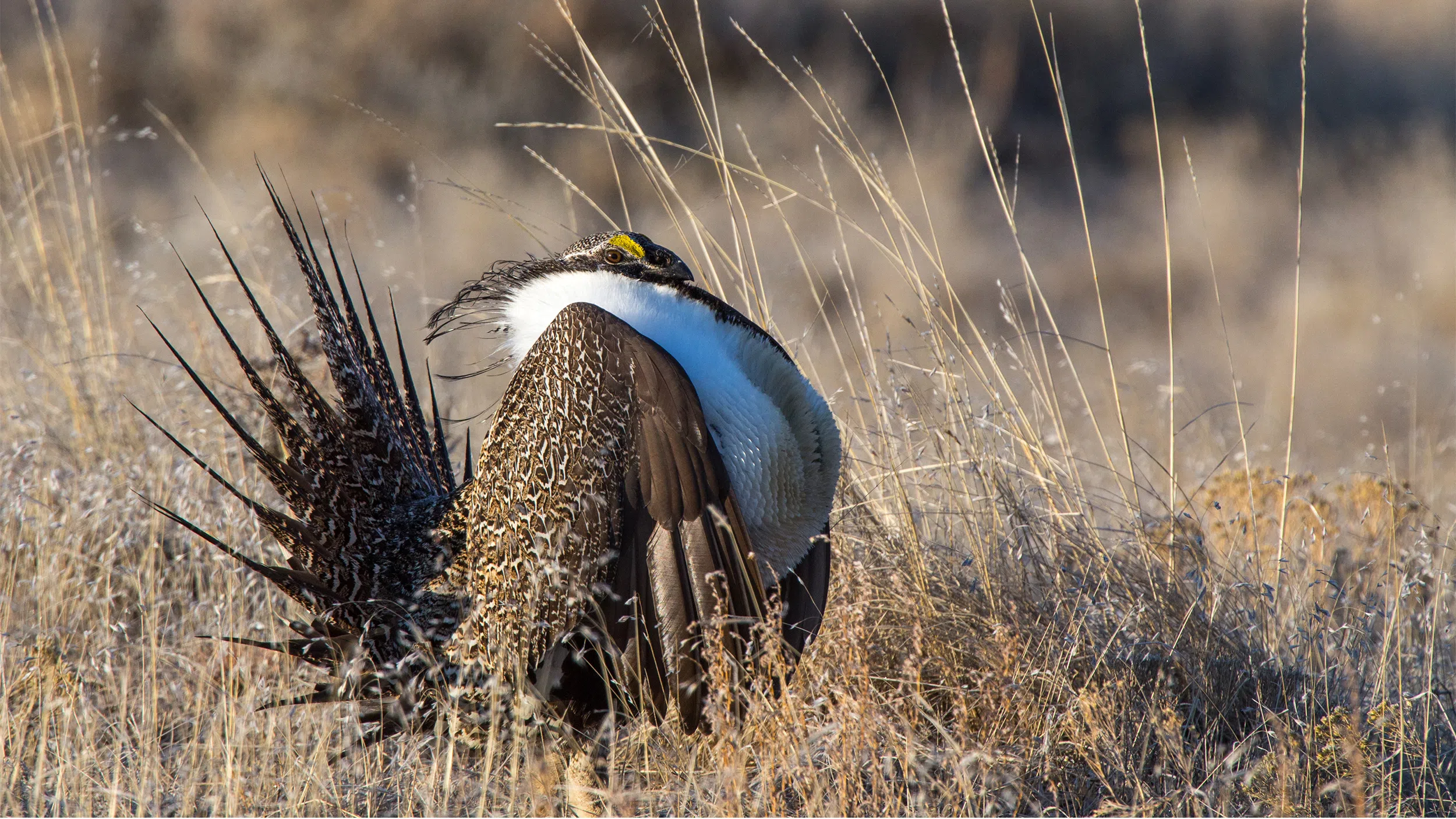
by Doug Leier
I keep three North Dakota OUTDOORS calendars on the wall in my office. When I glance up and see a dark shaded day I know it’s pretty significant. A season opener or application deadline is reason for a second look. While glancing at September I recalled how years ago there would be a three day stretch mid-week indicating the open and close of the sage grouse season.
I think back to 30 years ago when the hunting fellas and I would suggest, “We should head west sage grouse hunting.” The mutual understanding was two fold. How fortunate we were in North Dakota to have a season even if it was taking place closer to Denver than it was to Minneapolis for us in southeastern North Dakota (check the numbers, it’s pretty close). But even more we knew the future of sage grouse and an open season were like the Vikings Super Bowl aspirations — not too promising.
As a group of biologists and science teachers, football fans and coaches, we knew hunting wasn’t the cause of a shrinking population. We didn’t blame the fans for a football loss. It was about what was or wasn’t on the field. Habitat of players and coaches in the same ilk as the habitat or lack thereof for sage grouse.
“I know some people have said the sage grouse population in North Dakota is on hospice, and I
think that’s probably an accurate thing to say,” said Jesse Kolar, North Dakota Game and Fish Department upland game management supervisor in Dickinson. “I think the only saving grace we have is that Montana and South Dakota still have sage grouse connected to our population, so we could hope that those birds would source into our population. However, in the last couple of years, those populations haven’t been doing as well. South Dakota shut down their hunting season like us due to declines, and Montana has seen similar declines right across the border.”
North Dakota had its first sage grouse hunting season in 1964 and it was closed just once, in 1979, before being shut down indefinitely in 2008. The season, a three-day hunt the majority of those years, never attracted a wide audience, maybe 100 or so hunters annually. Since 1980, the highest number of grouse harvested in one season was 71 birds in 1983. In 2007, conceivably the last season, only 21 birds were taken.
“Unfortunately, today we’re down to just two remaining leks that we know of,” Kolar said in early April in southwestern Bowman County. “Last year there were 23 males on those two leks. This year our preliminary counts have been even lower. The lek where we saw 13 birds last year had about three so far. It’s early, so maybe we’ll see more later in the season, but it doesn’t seem promising.”
North Dakota is on the eastern edge of the birds’ range where habitat and climatic factors limit sage grouse success and expansion, so their numbers in the state have never been staggering.
The last time more than 100 males were counted on leks in North Dakota was 2007 with 199. Since then, their numbers have dropped significantly and there were years the totals never reached double digits.
“Around 2006 to 2008, their numbers dropped pretty precipitously, and we think it’s because West Nile virus showed up on the landscape,” Kolar said. “But in the grand scheme of things, there are a lot of causes to the sage grouse decline. We’ve lost sagebrush, we’ve had fragmentation with oil and gas development and other human development in their core habitat. Sage grouse like great big areas of predominantly undisturbed sagebrush and grasslands. And
we don’t have a lot of that left in their core range.”
Grouse look to sagebrush for food, cover from the weather and predators, and nesting and brood habitat.
“Sage grouse aren’t as productive as sharptails, partridge or pheasants. They definitely are on the slow production, longer lifespan scale,” Kolar said. “Some of our wildlife produces really rapidly — produces a lot of young and they die frequently. Sage grouse are more adapted to producing fewer young.”
Game and Fish Department wildlife managers haven’t sat idly by as sage grouse numbers slowly declined over time. In the last 20 years, for example, the agency was involved in habitat improvement and reclamation projects to help bolster the grouse population.
“As far as having a sage grouse hunting season again in North Dakota … I guess I’m pretty pessimistic,” Kolar said. “You never say never because all wildlife populations go through fluctuations and sometimes we do see unexpected spikes. But it doesn’t seem promising that we’ll open our season anytime soon.”
Which come to think of it. Isn’t much different than the Vikings and the Super Bowl
Source link : http://www.bing.com/news/apiclick.aspx?ref=FexRss&aid=&tid=66e98844b3bf42e9838ae0a7c19b70b9&url=https%3A%2F%2Fkfgo.com%2F2024%2F09%2F17%2Fnorth-dakota-is-fortunate-to-have-a-small-sage-grouse-population%2F&c=6323433236493955137&mkt=en-us
Author :
Publish date : 2024-09-17 02:37:00
Copyright for syndicated content belongs to the linked Source.
